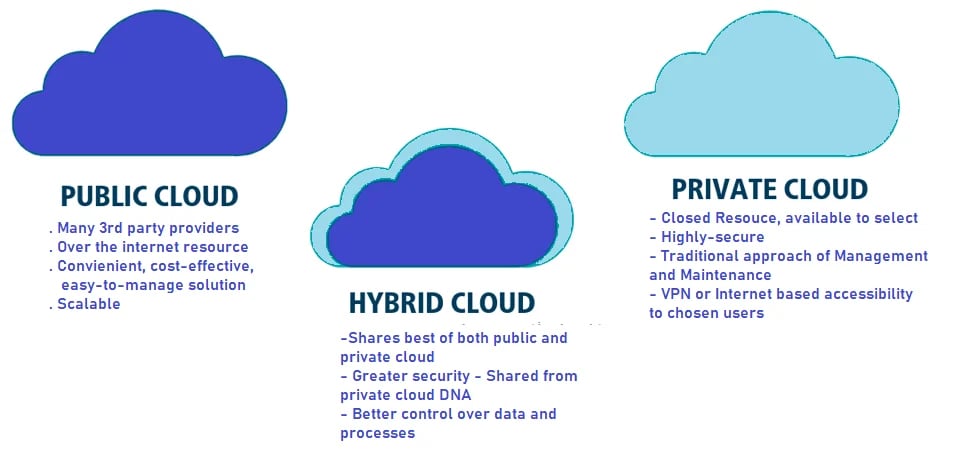6 Reactions to the White House’s AI Bill of Rights


Past week, the White Home place forth its Blueprint for an AI Bill of Legal rights. It is not what you may possibly think—it doesn’t give synthetic-intelligence programs the appropriate to no cost speech (thank goodness) or to have arms (double thank goodness), nor does it bestow any other rights upon AI entities.
Alternatively, it is a nonbinding framework for the legal rights that we outdated-fashioned human beings should have in romantic relationship to AI systems. The White House’s move is section of a world-wide press to set up rules to govern AI. Automated conclusion-building devices are actively playing ever more substantial roles in these kinds of fraught spots as screening position applicants, approving individuals for governing administration gains, and identifying clinical treatment options, and destructive biases in these units can lead to unfair and discriminatory outcomes.
The United States is not the to start with mover in this area. The European Union has been pretty lively in proposing and honing restrictions, with its substantial AI Act grinding bit by bit as a result of the essential committees. And just a couple of weeks back, the European Fee adopted a independent proposal on AI legal responsibility that would make it easier for “victims of AI-similar harm to get payment.” China also has quite a few initiatives relating to AI governance, though the procedures issued apply only to marketplace, not to govt entities.
“Although this blueprint does not have the pressure of regulation, the preference of language and framing clearly positions it as a framework for comprehending AI governance broadly as a civil-legal rights issue, just one that warrants new and expanded protections beneath American regulation.”
—Janet Haven, Information & Culture Investigate Institute
But again to the Blueprint. The White Residence Office of Science and Technological know-how Coverage (OSTP) initial proposed such a invoice of rights a calendar year in the past, and has been taking opinions and refining the idea at any time considering the fact that. Its five pillars are:
- The correct to safety from unsafe or ineffective devices, which discusses predeployment screening for threats and the mitigation of any harms, like “the chance of not deploying the process or eliminating a system from use”
- The correct to defense from algorithmic discrimination
- The appropriate to data privacy, which says that persons must have management in excess of how facts about them is utilized, and adds that “surveillance systems need to be subject to heightened oversight”
- The appropriate to detect and clarification, which stresses the will need for transparency about how AI methods get to their conclusions and
- The ideal to human alternatives, consideration, and fallback, which would give people today the skill to opt out and/or find help from a human to redress problems.
For a lot more context on this significant transfer from the White House, IEEE Spectrum rounded up 6 reactions to the AI Invoice of Legal rights from experts on AI policy.
The Middle for Security and Emerging Engineering, at Georgetown College, notes in its AI coverage e-newsletter that the blueprint is accompanied by
a “complex companion” that presents particular ways that field, communities, and governments can choose to put these principles into action. Which is good, as much as it goes:
But, as the doc acknowledges, the blueprint is a non-binding white paper and does not influence any existing procedures, their interpretation, or their implementation. When
OSTP officials announced designs to create a “bill of rights for an AI-run world” very last calendar year, they mentioned enforcement alternatives could contain restrictions on federal and contractor use of noncompliant systems and other “laws and polices to fill gaps.” Regardless of whether the White Household strategies to go after people possibilities is unclear, but affixing “Blueprint” to the “AI Monthly bill of Rights” would seem to reveal a narrowing of ambition from the authentic proposal.
“Americans do not have to have a new established of guidelines, laws, or guidelines focused exclusively on guarding their civil liberties from algorithms…. Existing regulations that shield Us residents from discrimination and unlawful surveillance utilize similarly to electronic and non-digital hazards.”
—Daniel Castro, Centre for Info Innovation
Janet Haven, executive director of the Info & Modern society Analysis Institute, stresses in a Medium post that the blueprint breaks floor by framing AI laws as a civil-rights situation:
The Blueprint for an AI Bill of Legal rights is as advertised: it is an define, articulating a set of principles and their likely apps for approaching the obstacle of governing AI via a legal rights-based framework. This differs from lots of other strategies to AI governance that use a lens of belief, safety, ethics, obligation, or other more interpretive frameworks. A legal rights-dependent approach is rooted in deeply held American values—equity, possibility, and self-determination—and longstanding legislation….
Whilst American law and coverage have historically centered on protections for folks, mainly ignoring group harms, the blueprint’s authors take note that the “magnitude of the impacts of details-driven automated devices may possibly be most quickly visible at the community level.” The blueprint asserts that communities—defined in wide and inclusive conditions, from neighborhoods to social networks to Indigenous groups—have the proper to safety and redress versus harms to the exact extent that people do.
The blueprint breaks even further floor by generating that claim by way of the lens of algorithmic discrimination, and a connect with, in the language of American civil-rights regulation, for “freedom from” this new sort of assault on basic American legal rights.
Although this blueprint does not have the force of regulation, the option of language and framing plainly positions it as a framework for understanding AI governance broadly as a civil-legal rights issue, one particular that warrants new and expanded protections less than American regulation.
At the Centre for Facts Innovation, director Daniel Castro issued a push launch with a very different get. He anxieties about the influence that possible new polices would have on business:
The AI Bill of Legal rights is an insult to both of those AI and the Invoice of Legal rights. Us citizens do not need a new established of guidelines, laws, or tips focused exclusively on protecting their civil liberties from algorithms. Employing AI does not give companies a “get out of jail free” card. Existing regulations that protect Us residents from discrimination and illegal surveillance utilize equally to electronic and non-digital pitfalls. Without a doubt, the Fourth Amendment serves as an enduring promise of Americans’ constitutional security from unreasonable intrusion by the govt.
Regrettably, the AI Monthly bill of Rights vilifies digital systems like AI as “among the fantastic worries posed to democracy.” Not only do these promises vastly overstate the opportunity dangers, but they also make it more challenging for the United States to contend against China in the world wide race for AI edge. What modern college or university graduates would want to go after a career making technological know-how that the best officers in the country have labeled dangerous, biased, and ineffective?
“What I would like to see in addition to the Monthly bill of Legal rights are govt steps and far more congressional hearings and legislation to address the promptly escalating problems of AI as determined in the Invoice of Rights.”
—Russell Wald, Stanford Institute for Human-Centered Synthetic Intelligence
The government director of the Surveillance Know-how Oversight Challenge (S.T.O.P.), Albert Fox Cahn, doesn’t like the blueprint possibly, but for opposite explanations. S.T.O.P.’s push release states the firm needs new polices and wants them proper now:
Produced by the White Household Workplace of Science and Technological innovation Plan (OSTP), the blueprint proposes that all AI will be designed with thing to consider for the preservation of civil legal rights and democratic values, but endorses use of artificial intelligence for legislation-enforcement surveillance. The civil-legal rights group expressed worry that the blueprint normalizes biased surveillance and will speed up algorithmic discrimination.
“We do not need to have a blueprint, we will need bans,”
reported Surveillance Technological innovation Oversight Venture government director Albert Fox Cahn. “When law enforcement and organizations are rolling out new and destructive varieties of AI just about every working day, we want to force pause across the board on the most invasive technologies. While the White Property does consider goal at some of the worst offenders, they do significantly too little to address the everyday threats of AI, notably in police palms.”
One more very active AI oversight group, the Algorithmic Justice League, will take a additional positive check out in a Twitter thread:
Modern #WhiteHouse announcement of the Blueprint for an AI Bill of Legal rights from the @WHOSTP is an encouraging stage in the right course in the combat toward algorithmic justice…. As we observed in the Emmy-nominated documentary “@CodedBias,” algorithmic discrimination additional exacerbates repercussions for the excoded, people who experience #AlgorithmicHarms. No a single is immune from being excoded. All people have to have to be distinct of their legal rights in opposition to such technological innovation. This announcement is a move that lots of community users and civil-modern society companies have been pushing for in excess of the past numerous a long time. Even though this Blueprint does not give us all the things we have been advocating for, it is a road map that ought to be leveraged for larger consent and equity. Crucially, it also provides a directive and obligation to reverse program when vital in get to stop AI harms.
Last but not least, Spectrum reached out to Russell Wald, director of policy for the Stanford Institute for Human-Centered Synthetic Intelligence for his point of view. Turns out, he’s a minimal disappointed:
Although the Blueprint for an AI Bill of Rights is handy in highlighting serious-planet harms automated programs can result in, and how precise communities are disproportionately impacted, it lacks teeth or any aspects on enforcement. The document precisely states it is “non-binding and does not represent U.S. federal government policy.” If the U.S. federal government has discovered genuine challenges, what are they accomplishing to suitable it? From what I can tell, not enough.
One particular exclusive obstacle when it comes to AI policy is when the aspiration does not drop in line with the useful. For instance, the Invoice of Legal rights states, “You must be capable to decide out, the place suitable, and have entry to a particular person who can immediately consider and treatment difficulties you come across.” When the Department of Veterans Affairs can get up to three to five many years to adjudicate a assert for veteran gains, are you actually supplying individuals an opportunity to choose out if a sturdy and responsible automated process can give them an response in a couple of months?
What I would like to see in addition to the Monthly bill of Rights are govt actions and a lot more congressional hearings and laws to address the fast escalating issues of AI as identified in the Bill of Rights.
It’s well worth noting that there have been legislative attempts on the federal degree: most notably, the 2022 Algorithmic Accountability Act, which was released in Congress previous February. It proceeded to go nowhere.




